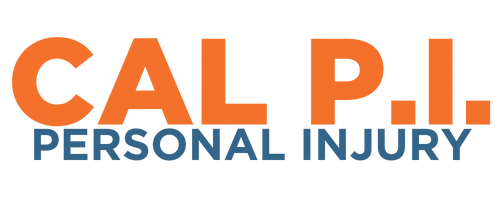

Setting up a fair and compliant fee schedule for a personal injury practice is essential for chiropractors. This involves navigating through various regulations and understanding the importance of maintaining competitive pricing while avoiding illegal billing practices. In this article, we'll discuss key aspects of setting up a fee schedule, ensuring compliance with relevant laws and regulations, and leveraging resources to help you develop a competitive pricing strategy.
It is crucial to establish a fee schedule that is fair to your patients and avoids a dual fee schedule, which could be considered an improper billing practice. According to the article by Samuel A. Collins, fee allowances are agreed upon or mandated based on contracts between providers and insurance companies, or mandated by law. By having contracts with multiple insurance companies, it is legal to have different fees for the same service based on the specific plan. However, non-contracted fees should be the same for all, and any variation without a contract or mandated fees would constitute a dual fee and be considered illegal.
Contracted fees with insurance plans, such as Blue Cross Blue Shield, American Specialty Health, Optum Health (UnitedHealthcare), Aetna, and CIGNA, allow for different fee schedules. These managed care contracts legally permit differing fees from the "regular" or "non-contracted" rate. However, it's essential to ensure that patients understand the discounts they receive when using a contracted provider to avoid confusion and promote transparency.
The Office of Inspector General (OIG) has issued Advisory Opinion No. 08-03, which addresses the legality of offering discounts for prompt pay. According to this opinion, a 5-15 percent reduced rate for prompt payment is considered reasonable. This discount can be seen as fair, considering the bookkeeping savings from eliminating the administrative and clerical work associated with billing insurance, as well as the waiting period for payments.
However, it's important to note that the OIG opinion does not supersede state laws. Before offering any discounts for prompt pay or cash, it's essential to check with your state licensing board, department of insurance, and/or attorney about the legality of offering such discounts in your area.
In California, the Business and Professions Code 657 allows chiropractors to offer a discounted rate for patients who are not insured or have no insurance reimbursement for a service. This fee can be discounted, and the rate does not affect the regular or insurance rate. This law provides flexibility for chiropractors to offer reduced fees for uninsured patients or those without insurance coverage for specific services.
However, chiropractors should be aware of the laws and regulations in their state when offering discounts or adjusting fees. It's crucial to ensure compliance with state laws and avoid potential legal issues related to billing practices.
California Business and Professions Code 657 specifically addresses the issue of offering discounts to patients who are uninsured or have no insurance reimbursement for a service. According to this law, healthcare providers in California are allowed to offer a discounted rate to such patients. Importantly, this discounted rate does not affect the regular or insurance rate charged to other patients.
The primary purpose of this law is to make healthcare more accessible and affordable for patients without insurance or those whose insurance does not cover specific services. By allowing healthcare providers to offer discounts, the law aims to alleviate the financial burden faced by these patients and encourage them to seek necessary care.
In the context of a chiropractic personal injury practice, California Business and Professions Code 657 can be used as a basis for offering discounts to patients without insurance coverage or with limited coverage for chiropractic services. However, it is crucial to ensure that these discounts are applied consistently and transparently, in accordance with the law, to maintain a fair fee schedule and avoid potential legal issues.
It's essential for chiropractors to comply with the Anti-Kickback Statute (AKS) and the False Claims Act when setting up their fee schedule. According to Collins' article, routinely failing to collect the patient's portion of the care is considered a violation of both the AKS and the False Claims Act. The OIG and the Department of Justice acknowledge cases of financial hardship and make allowances for those unable to pay, as well as situations where a physician makes a reasonable effort to collect from a patient but does not receive payment. However, the routine waiver of patient responsibility can lead to serious consequences.
The Anti-Kickback Statute (AKS) is a federal law in the United States that aims to prevent healthcare providers from engaging in fraudulent or corrupt practices related to the referral and provision of healthcare services. The main purpose of the AKS is to ensure that medical decisions are made in the best interest of patients and not influenced by financial incentives.
Under the AKS, it is illegal for healthcare providers to knowingly and willfully offer, pay, solicit, or receive any form of remuneration (such as kickbacks, bribes, or rebates) in exchange for referring patients for services or items that are reimbursable by federal healthcare programs like Medicare and Medicaid. This includes not only direct monetary payments but also other forms of compensation, such as gifts, free services, or discounts.
Violating the Anti-Kickback Statute can lead to severe penalties, including criminal charges, civil fines, exclusion from federal healthcare programs, and potential imprisonment. Healthcare providers must exercise caution to ensure that their financial arrangements and business practices are compliant with the AKS.
In the context of a chiropractic personal injury practice, it is crucial to avoid practices that may be considered kickbacks or inducements, such as routinely waiving copays or deductibles for patients, offering excessive discounts without a valid reason, or entering into referral arrangements that involve financial incentives. Compliance with the AKS helps maintain the integrity of the healthcare system and protects both patients and providers from potential fraud and abuse.
Transparency in billing practices is crucial for maintaining patient trust and ensuring legal compliance. Chiropractors should ensure that patients understand their financial responsibility for services, including deductibles and non-paid amounts when not contracted. This can be achieved through financial agreements and open communication with patients about the fees they will be responsible for, based on their insurance plan or lack thereof.
When billing, it's important to reflect only the amount charged to the patient, not the regular fee, to avoid any confusion or potential legal issues. Patients should not receive any benefits (deductibles) or payments from insurance above the amount they have actually paid or are expected to pay. By maintaining transparency and accurate billing practices, chiropractors can foster patient trust and satisfaction.
FairHealthConsumer.org is a valuable resource for chiropractors looking to research fee schedules in their area. This website provides information on fees for specific zip codes, allowing practitioners to compare their pricing with local averages. For example, in our discussion, we looked at the fees for codes 99203, 99204, 98941, and 98943. By leveraging this resource, chiropractors can ensure their fees are competitive and in line with local standards.
When researching specific fee amounts for your area using FairHealthConsumer.org, you can gain valuable insight into local pricing for various services. In the example we discussed earlier, the following fees were listed for my zip code:
By considering these fees and adjusting your pricing accordingly, you can ensure that your personal injury practice remains competitive in the local market. This will not only help attract new patients but also contribute to maintaining a fair and transparent fee schedule for your chiropractic services.
The fee schedule you establish for your personal injury practice can significantly impact patient retention and satisfaction. Competitive pricing that aligns with insurance contracts and local averages can help attract and retain patients. However, it's important to avoid waiving or forgiving fees without a legal basis or a proper hardship case, as this can lead to legal issues and create an unequal fee structure for patients.
By developing a fair fee schedule and maintaining transparency in billing practices, chiropractors can create a positive experience for their patients, encouraging them to continue seeking care and referring others to the practice. It's essential to strike a balance between offering competitive pricing and maintaining legal compliance to ensure the success of your personal injury practice.
In conclusion, setting up a fee schedule for a personal injury practice involves understanding and adhering to relevant laws and regulations, maintaining transparency in billing practices, and using resources like FairHealthConsumer.org to ensure competitive pricing. By following these guidelines and emphasizing patient communication, chiropractors can create a successful and compliant personal injury practice.



